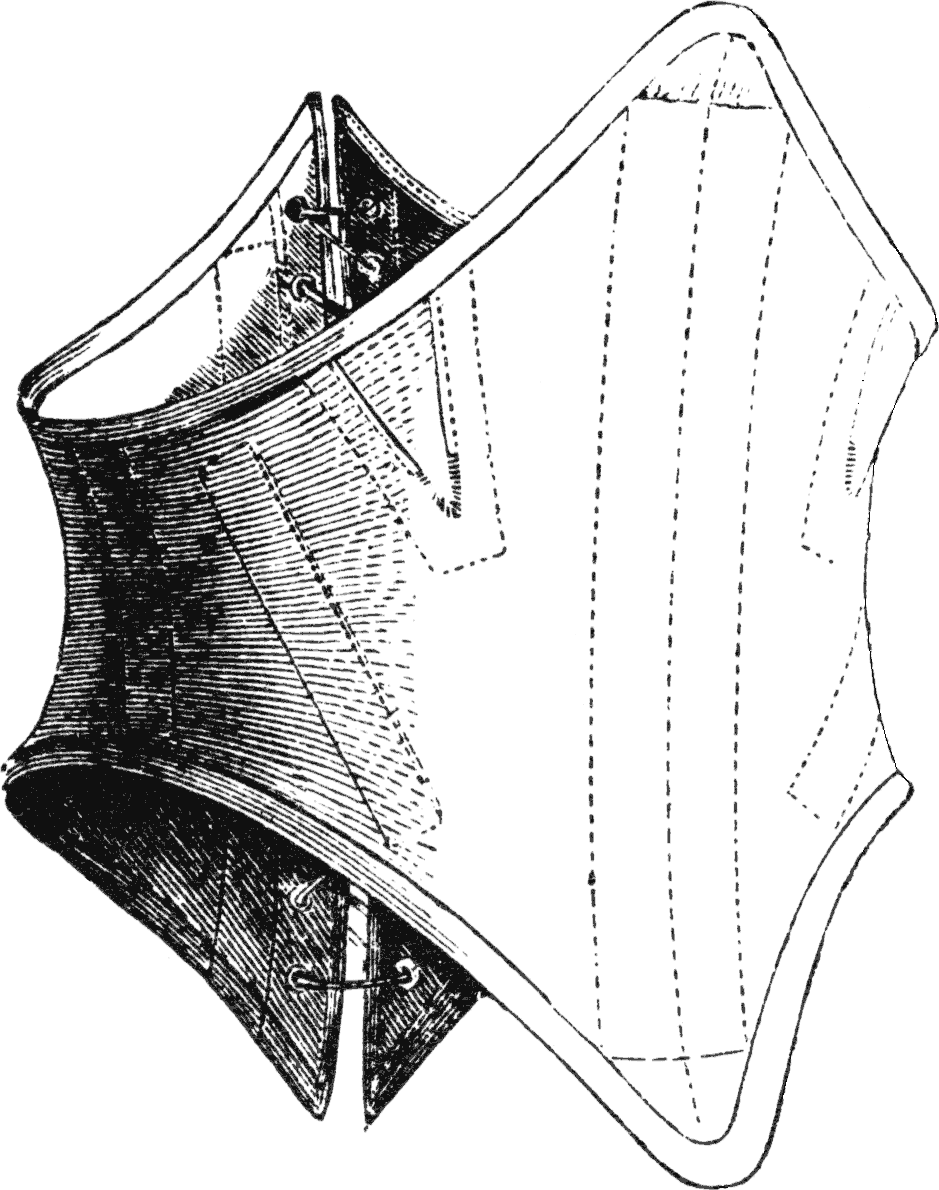
Waist cincher
Encyclopedia

Waist
The waist is the part of the abdomen between the rib cage and hips. On proportionate people, the waist is the narrowest part of the torso....
to make the wearer's waist physically smaller, or to create the illusion of being smaller.
Today
Waist cinchers and Waspies from the 1980s are a type of wide, laced belts with elastic fabric and soft plastic stiffeners.Ribbon corset
The ribbon corset is made of pieces of ribbon, as opposed to fabricFabric
A fabric is a textile material, short for "textile fabric".Fabric may also refer to:*Fabric , the spatial and geometric configuration of elements within a rock*Fabric , a nightclub in London, England...
. In 1901, a simple pattern of silk ribbon, two bone
Bone (corsetry)
In corsetry, a bone is one of the rigid parts of a corset that forms its frame and gives it rigidity.-Purpose, history and materials:The purpose of the boning in a corset varies slightly from era to era....
s, and a busk
Busk
A busk is the rigid element of a corset placed at the centre front.In stays, the corsets worn between the fifteenth and eighteenth centuries, the busk was intended to keep the front of the corset straight and upright. It was made of wood, ivory, or bone slipped into a pocket and tied in place with...
was available, allowing women to construct their own ribbon corsets.
A pseudo-ribbon corset looks like a ribbon corset but is made from cut cloth instead of ribbons. The outside seam of the cut cloth is sewn fine, while the tight inside seam is sewn plain and curved.

